
Backspace and Offset Explained
Backspace and offset determine the position of the wheel and tire on the vehicle. Wheel positions vary based on the application. Applications range from tucked under the fender to sticking out.
Correct backspace & offset eliminate clearance issues with fenders, brakes, struts or other possible obstructions. Some applications will require modification.
Backspace is the distance in inches from the edge of the rear flange to the mounting surface.

Offset is the distance in millimeters from the wheel’s imaginary centerline to the mounting pad.
There are three main types of offsets: positive, zero and negative.
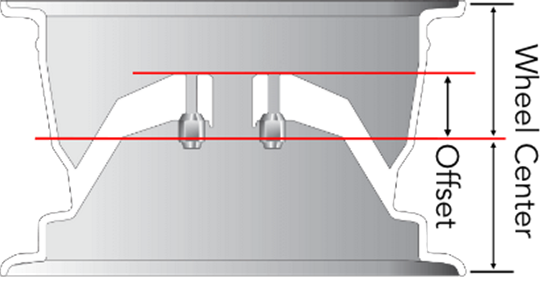
Positive offset: The mounting pad is forward of the centerline (towards the street).
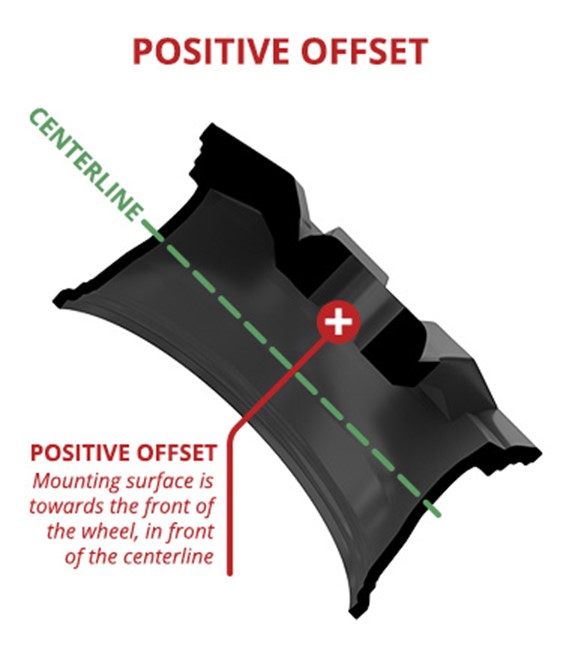
Zero offset: The mounting pad is on the wheel centerline.
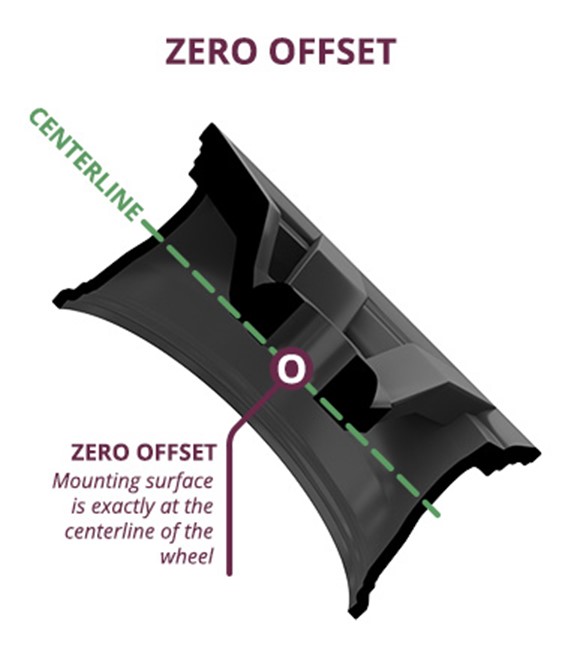
Negative offset: The mounting pad is behind the wheel centerline (towards the vehicle).
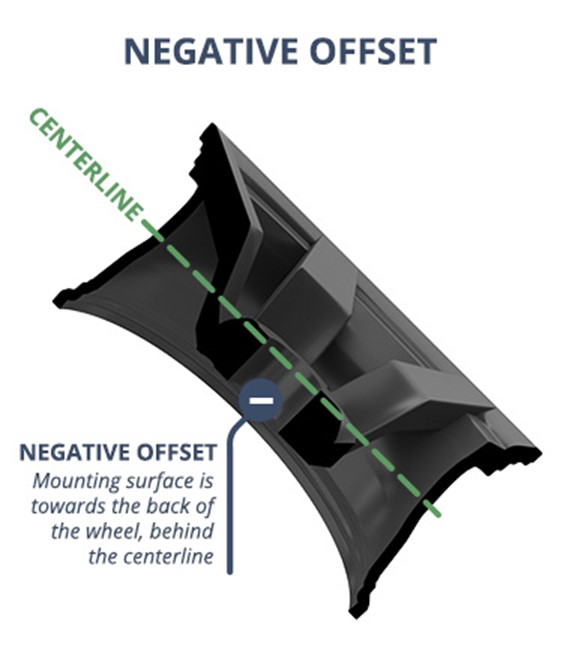
Here’s a side-by-side look at each of the three offset types:
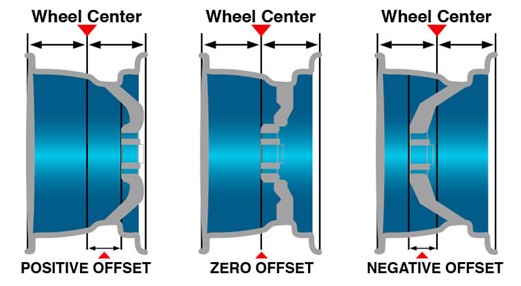
Both backspace and offset relate to the position of the mounting surface. As seen below, the position of the mounting surface affects the position of the wheel on the vehicle. You can also see how the offset impacts the appearance of the wheel.
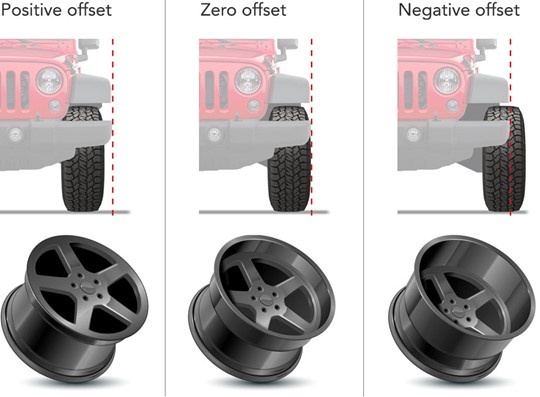
Some vehicles run staggered offsets. In a staggered setup the front wheel is narrower than the rear requiring different offsets for each.
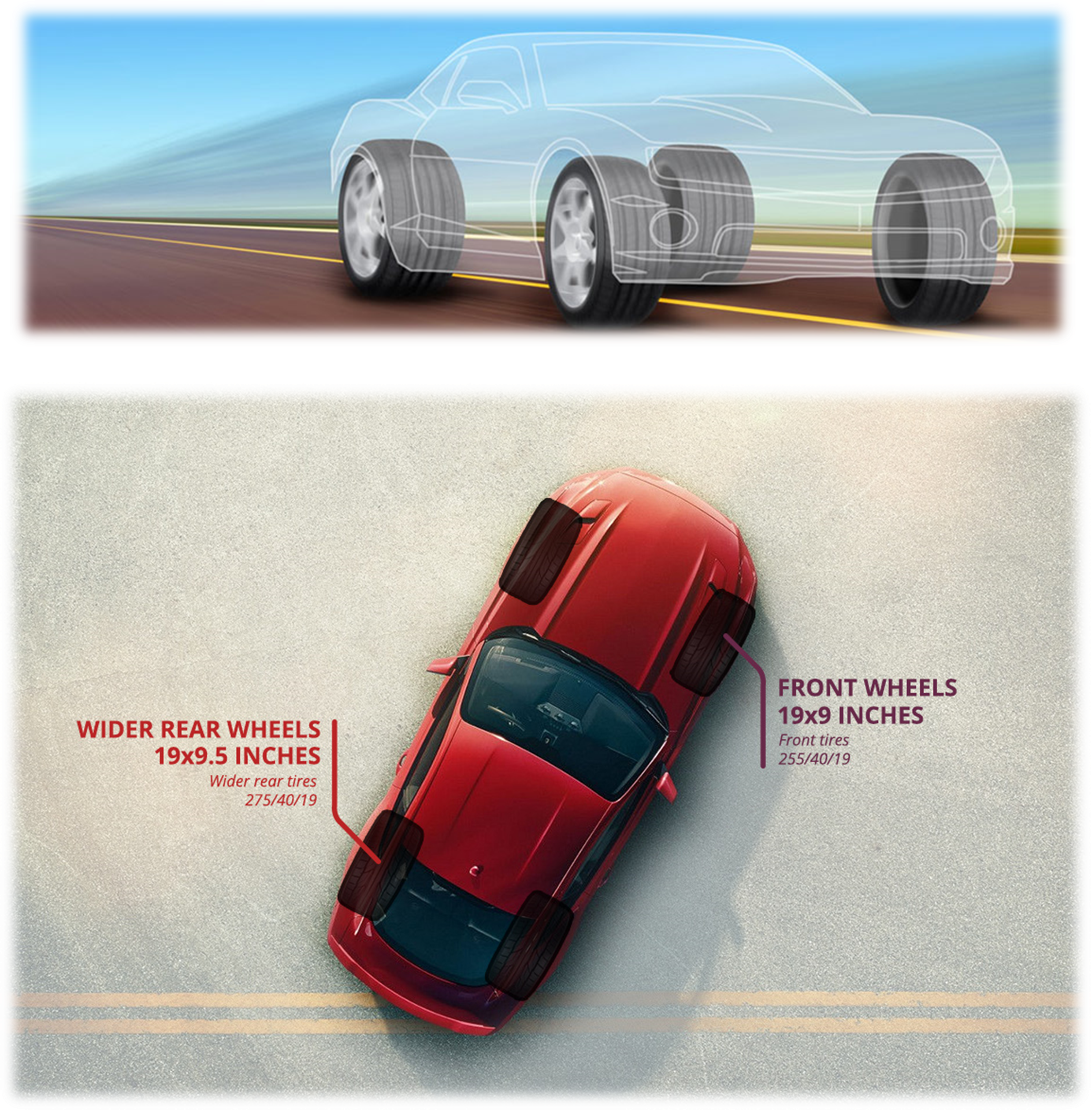
Article courtesy of WheelPros.com

